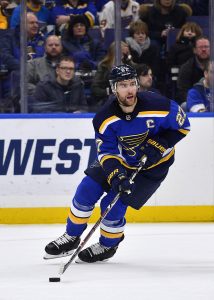Despite the hopes and dreams of fans around the NHL, the agreed-upon return-to-play conditions and extended CBA is not likely to include any kind of amnesty clause, per TSN’s Bob McKenzie. The assumption that the salary cap will hold at $81.5MM for the next two seasons gave rise to some speculation that the stagnant cap would be augmented by an amnesty provision, but it appears teams will be stuck with the contracts they’ve got on the books. For the Calgary Flames, that means Milan Lucic, writes Todd Cordell of Hockey Buzz. Lucic has three more years on his deal worth $5.25MM per season. The 32-year-old Lucic hardly set the world on fire in his first season in Calgary, notching just 20 points (8 goals, 12 assists) across 68 games. The Flames acquired Lucic and a conditional 3rd round pick for winger James Neal after one disappointing season in Calgary produced just seven goals. The money owed Lucic isn’t exorbitant, but it’s not an ideal price tag for an aging winger entering his mid-thirties. Lucic still played a role on the Flames’ third line, but his days as a 40-60 point scorer appear behind him. Additionally, it’s unclear right now if the Flames will actually receive the third-round pick. To get the pick in this year’s draft, Neal had to score at least 21 goals and record 10 more goals than Lucic. The second condition was qualified, but Neal scored just 19 goals – in a shortened season. Common sense would look at those numbers and say Neal was going to qualify both conditions, but it’s not entirely clear.
- When the NHL returns to television, the game may look the same – except for the leagues of empty seats in the background – but the audio experience may provide an even more jarring change, per Kevin McGran of The Star. Without access to players, the play-by-play commentators are likely to call games from a studio instead of the arena, and in terms of sideline reporting, well, there won’t be any. Studios are still working on the best way to pump in ambient sound, whether that’s highlighting sounds from the ice or using some kind of fan track. The most entertaining option would almost certainly be to mic the players, but that would require players to curb their vulgarity, which, in the heat of the moment, might be too great an ask.
- Libor Hajek of the New York Rangers has hired Octagon as his representation, tweets agent Allan Walsh. The young blueliner appeared in 28 games for the Rangers this season, recording five assists but no goals. Walsh also represents NHL players like Marc-Andre Fleury and Brock Boeser.
